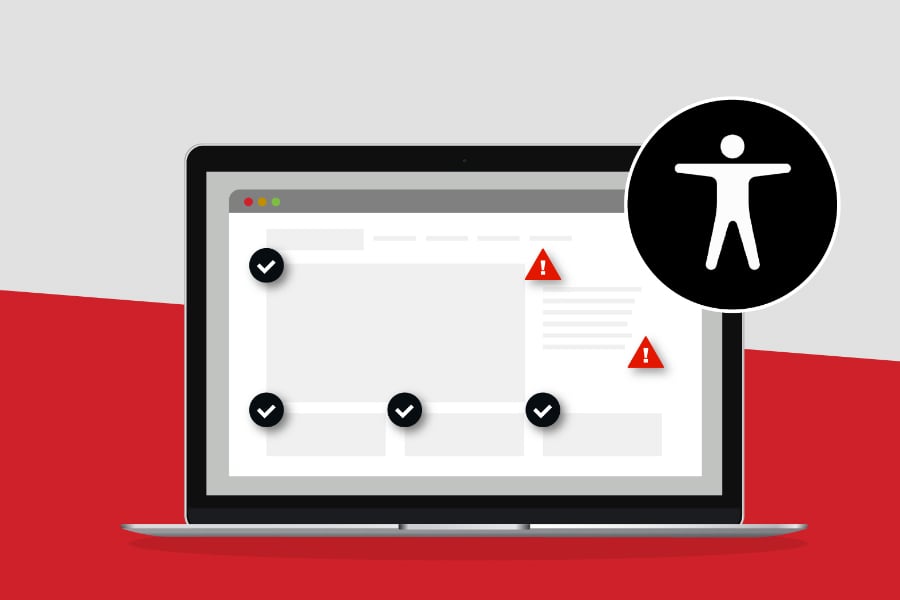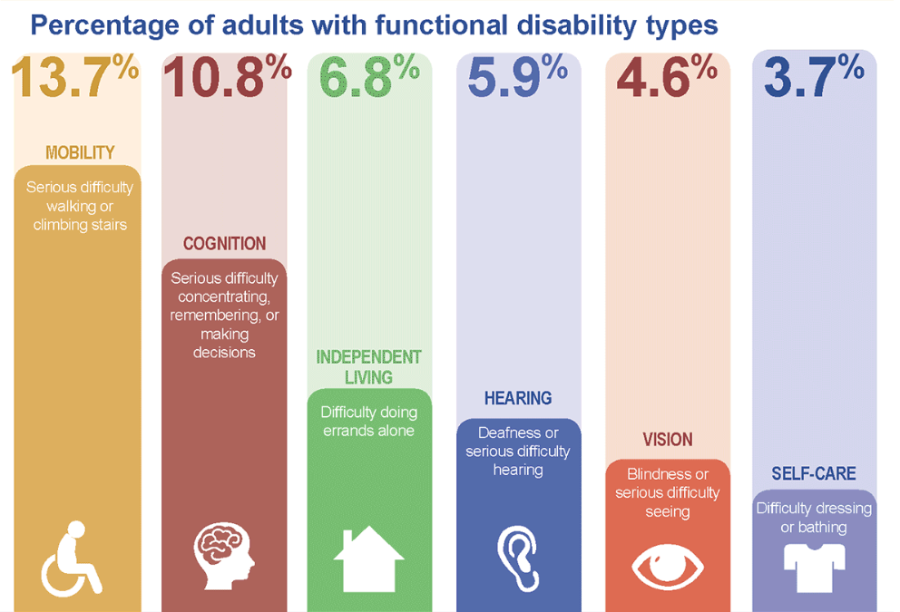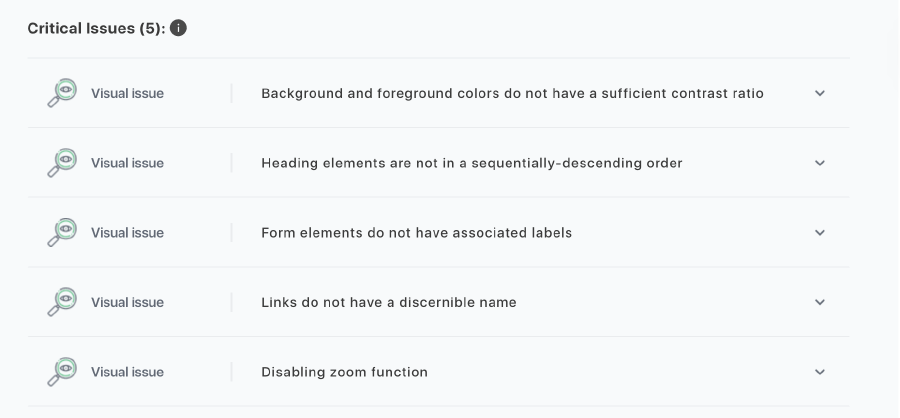Logistics
Industries
Technology & Innovations
E-commerce
E-commerce Fulfillment Services
Lease & Maintenance
Semi Trucks
Logistics
E-commerce
Lease & Maintenance
Buy Used Trucks

In the US alone, over 60 million adults are living with a disability. In other words, 26%... or 1 in 4 people. These numbers alone bring forth the question: are retailers doing enough to cater to a vast community with unique needs?
In omnichannel selling, we speak often about meeting our customers where they are. For many brands, this means having various selling channels through social media, third-party marketplaces, boutique stores, and brick-and-mortar locations.
However, this method of thinking doesn't typically factor in an entirely different concept of meeting customers where they are: catering to their disabilities.
From limited mobility consumers shopping in-store to visually impaired online shoppers, retailers who aren't taking the time to improve accessibility issues within their spaces are likely missing out on several new customers.
Not only that: Failing to acknowledge a diverse audience is a tell-tale sign of whether a company is up-to-speed with its corporate social responsibility. And in 2022, CSR can make or break a purchase (especially from Millennials and Gen Z-ers).
It's clear that now, more than ever, retailers need to consider consumers with disabilities or unique needs within their site design, store design, and merchandising decisions.
Accessibility is the practice of making websites, products, activities, or environments as inclusive and attainable for as many people as possible. It expands beyond physical barriers and includes technological barriers like visual impairments, sensory input, and more.
For example, a wheelchair-bound consumer with no other disabilities may have no problem shopping online; however, the same customer may avoid brick-and-mortar spaces that don't provide access to wheelchair-friendly ramps and aisles.
Similarly, a visually impaired customer could have a difficult time shopping online if there are no text-to-speech options. This customer in particular may prefer an in-store experience to touch and try on clothing in real-time or ask a store associate for guidance.
Having accessible options both online and offline ensures businesses are meeting all of their community members where they are.

According to the CDC, over 13% of adults have a disability that impacts their ability to walk or climb stairs. Plus, over 10% of adults have some sort of hearing or vision disability. Whether online or off, these functions alone make up a large part of a retail shopping journey.
Retailers who aren't actively acknowledging a portion of their consumers could be disabled people are simply ignoring a large community. This type of behavior could turn away current customers... over 70% of consumers prefer purchasing from companies that align with their moral values.
Not only that, but retailers who aren't including features like an accessible entrance or grab bars within restrooms are putting customers at risk for in-store injuries.
For decades, disability was viewed through the lens of the 'medical model' where the focus was rooted in what a disabled person's body cannot do. For example, based on the medical model of disability, if a customer in a wheelchair isn't able to get to a physical retail store, it's because of their impairment rather than the fact that the store doesn't have a ramp.
Disability rights activists challenged this model in the 1970s and 80s with the 'social model of disability.' This new model focuses on individual limitations as a result of society's failure to provide accessibility options. Essentially, it ensures disabled people are taken into account within day-to-day societal organization and engineering.
Through the lens of the social model of disability, the above example would put a burden on the retailer rather than the person in a wheelchair.
Shortly after the development of the social model of disability, the Americans with Disabilities Act of 1990 (ADA) was established. The ADA fights discrimination against persons with disabilities and ensures equal employment opportunities, government services, accommodations, transportation, and commercial facilities like retail stores.
Given the sheer number of adults who have difficulty with mobility, vision, hearing, or cognition, it makes sense that they may shop online to streamline the buying journey from the comfort of their own homes.
For some disabled shoppers, simply traveling to a retail store on their own could pose a safety risk. This means it's all the more important for online retailers to make sure their sites have digital accessibility options.
Without digital ADA compliance, online retailers could be unintentionally sending a message of "you're not welcome here" to the disabled community. This alone could hurt the mental health of those consumers who are affected.
Retailers are typically looking to appeal to the masses. With 1 in 4 consumers being people with disabilities, these same retailers will need to acknowledge that many of their customers may have different needs than what they're used to.
To provide equal access for all consumers, retailers will not only need to acknowledge that many of their customers may be disabled but also have a set plan in place. Accepting this as a normal requirement of owning a physical or digital store will help retailers be better prepared for any ADA compliance concerns that arise. And, it'll create a safer, more inviting space for all of their customers.
Online and offline spaces will have different ADA accessibility guidelines. This means that retailers will need to do their own research catered to the type of store that they own to understand any changes they may need to make.
For online retailers, https://www.accessibilitychecker.org/ is a great starting point to determine how compliant your site is. It'll track any issues and pinpoint them in your coding so your team can update quickly.

While brick-and-mortar retailers, it'll require a bit more manpower to take note of all of the ways that your store could be more accessible. The ADA has a great checklist that retailers can go through to make sure they maintain accessible features. As a starting point, the top areas of ADA violation are:
In general, these areas of your physical store will need to be monitored closely and kept up to ADA standards.
Because many consumers with disabilities utilize online retail, digital accessibility is imperative for the success of online stores.
Digital retailers should be researching and implementing assistive technology like text-to-speech, increase/decrease of font size, reading aid, and color adjustments. This way, customers with visual impairments should be able to seamlessly navigate the site without feeling like they are being left in the dust.
Not only that, but retailers can quickly make their sites more accessible by simply updating and expanding their product descriptions. For example, if someone with a mobility issue was purchasing a shirt, they might want to know some in-depth details about the type of fabric, whether it stretches or not, and if there are any buttons or zippers that could be difficult.
At first glance, the ADA compliance list may seem never-ending. But, as we mentioned above, retailers can group their efforts into different areas of their store for a less intimidating approach. For example, focus on just the outside area/entrance with the following features:
Once these improvements have been made, storeowners can move to the inside environment and break it down into groups like checkout counter, restrooms/fitting rooms, and aisles. Each area will have similar requirements like ensuring enough width for a wheelchair to pass through, grab bars for any seated areas, and accessible height of shelves/counters.
Providing accessibility features is not the only thing needed to make the physical and online retail industry safe for people with disabilities. Additionally, store owners will have to ensure their staff is fully prepared to navigate a workspace where disability concerns could be raised.
This includes not just physical measures like making sure aisles are unobstructed or checking that the bathroom floor is dry, but also social-emotional skills like how to politely inquire whether a person needs help as well as avoiding any microaggressions.
As always, customer feedback is the key to success, especially within the retail sector.
Brands that are transparent with their community about what they're doing to create an inclusive space will gain more loyal customers than those who are just sitting on the sidelines. Plus, being open to feedback and a learning process shows all of their customers that they're trying - something that is very much appreciated.
Ultimately, every person should be able to shop for the products they need (and want).
In 2022, we're very lucky to have technology that helps us safely connect with each other and the outside world; however, even with access to advancements in automation and mechanics, many stores within the retail industry are simply just not accessible enough.
And while it may seem like a big undertaking, with a few simple updates and a good amount of care, making your store more accessible will benefit both you and your customers. Put simply, it's just the right thing to do.